This article was published in Scientific American’s former blog network and reflects the views of the author, not necessarily those of Scientific American
Among the many wonderful things that NASA does, it maintains open-access scientific data on the positions and motions of known natural objects in the solar system. The solar system dynamics website at the Jet Propulsion Laboratory (and Caltech) also posts regularly updated visual maps of the locations of planets, numbered asteroids (over some 450,000 at present), and comets.
So, want to know what's out and about right now, in January 2016? Here are the maps - first showing the view looking 'down' onto the ecliptic plane from a vantage above over the northern solar pole, then looking 'sideways' from a vantage point in the ecliptic plane.
In each set of 3 maps we zoom away from the inner solar system, then see just the outer solar system (without plotting the inner stuff), and finally the 'distant' solar system of Kuiper-belt, or trans-Neptunian objects.
On supporting science journalism
If you're enjoying this article, consider supporting our award-winning journalism by subscribing. By purchasing a subscription you are helping to ensure the future of impactful stories about the discoveries and ideas shaping our world today.
Bear in mind that these are just the known objects. Also bear in mind that as cluttered as our solar system appears, the individual bodies are absolutely miniscule compared to the gulfs of empty space that separate them. Even in the inner asteroid belt there are, on average, millions of kilometers between the larger members, and you could fit all the major planets end-to-end in the distance between the Earth and the Moon (a scale not even resolved in these maps).
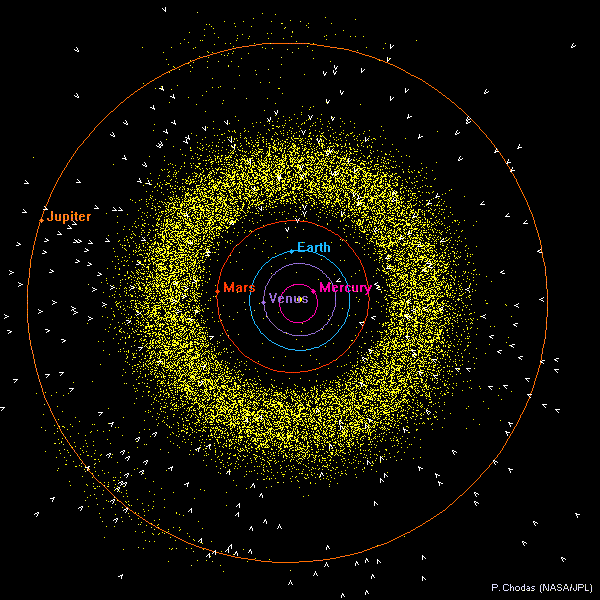
Inner solar system from above. Yellow dots indicate asteroids, white 'arrows' pointing sunward indicate comets (Credit: P. Chodas/NASA/JPL)
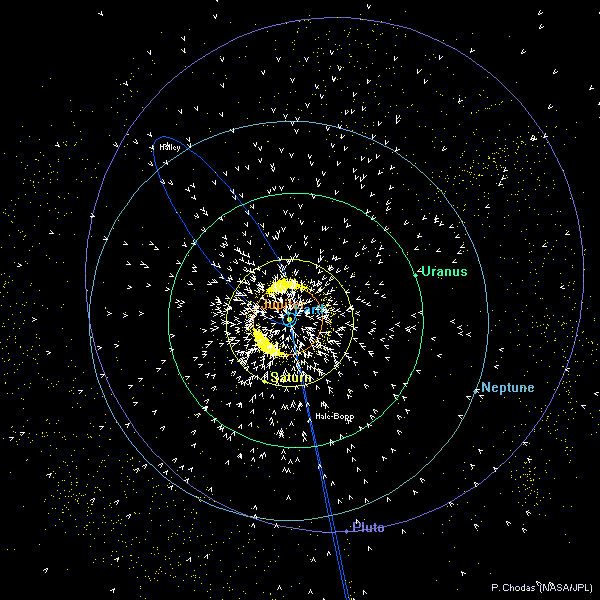
Outer solar system, symbols as above (Credit: P. Chodas NASA/JPL)
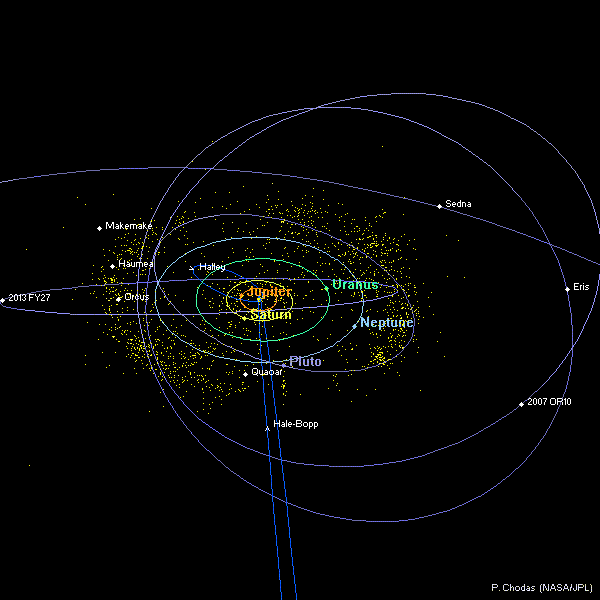
Distant solar system (Credit: P. Chodas NASA/JPL)
And now the same 3 scales, but viewed 'edge on':
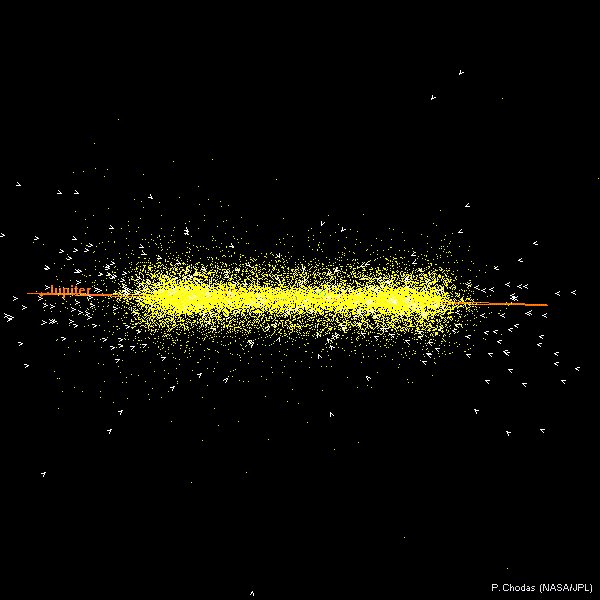
Inner solar system, edge-on (Credit: P. Chodas NASA/JPL)
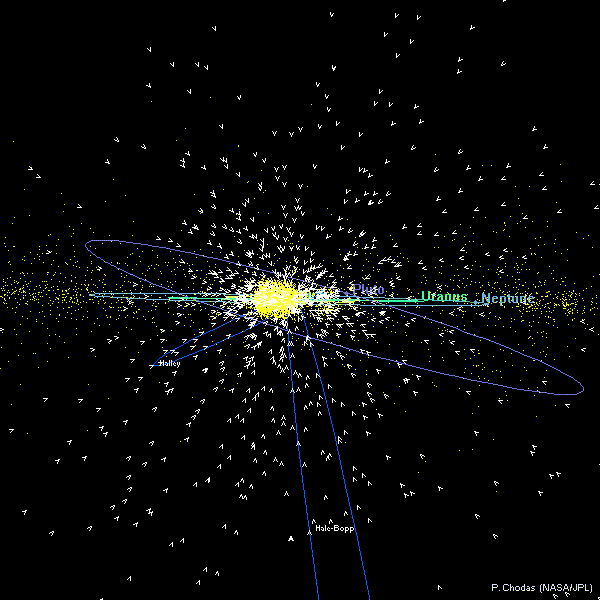
Outer solar system, edge-on (Credit: P. Chodas NASA/JPL)
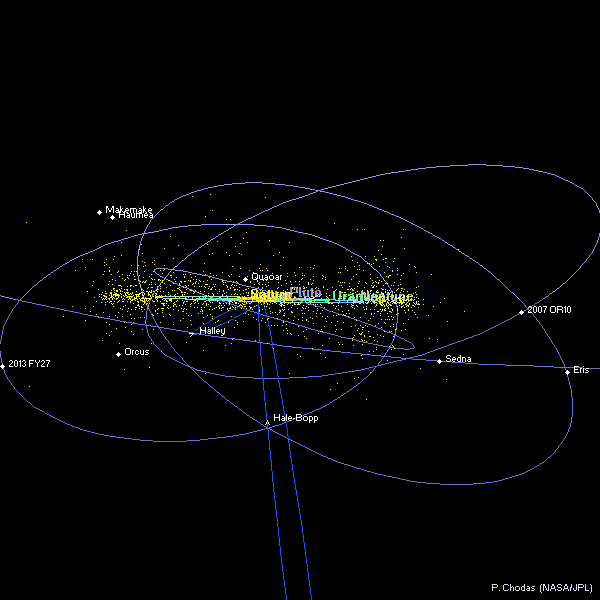
Distant solar system, edge-on (Credit: P. Chodas NASA/JPL)